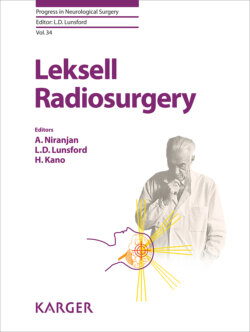Читать книгу Leksell Radiosurgery - Группа авторов - Страница 27
На сайте Литреса книга снята с продажи.
Regulatory Authorities
ОглавлениеThe Gamma Knife was developed prior to the FDA law regulating technology, and as such was “grandfathered” in for marketing and sales in the USA. The Nuclear Regulatory Agency, charged with monitoring our nation’s nuclear arsenal and nuclear power plants, also took responsibility for the oversight of sealed radiation sources, in this case cobalt-60.
The Gamma Knife, as a therapeutic tool, seemed mysterious to the NRC, who also could not fathom how a neurosurgeon would be involved. They were very concerned about several features, including patient safety (exposure), shielding for the unit (a much different process and standards outside of the USA), and how to load the 201 cobalt-60 sources in the Model U (fifth made) Gamma Knife, which required that a 20-t cast iron sarcophagus surround the sources as a shield. During reloading opening the shield would expose all 201 sources (6,000 Ci of cobalt) [9, 10].
Loading proved to be a major obstacle. We proposed several alternatives, including using a heavily shielded adjacent building at the University of Pittsburgh Department of Physics.
A shipping container was suggested so that the loaded unit could be moved to the hospital. A drop test was proposed wherein the loaded Gamma Knife would be dropped 100 feet by a crane onto a concrete pad to see if the cast iron casing cracked. Thus, the Elekta Tiger was created to enclose the loaded device and designed to simulate a freight train with the Tiger/Gamma Knife wrecking in a head on collision with another train – but leading to no radiation source leakage! At the final implementation meeting with the NRC central office in Washington, DC, Larry Leksell was taken aside by the NRC chair and told “forget it, we would never be able to determine if you passed or failed the test.”
The pressure mounted to develop an alternative. Medical physicist Anne Maitz called on her friends at Westinghouse to load the Gamma Knife using robotic manipulators. Very heavy shielding with concrete walls of 1 foot or more in the treatment vault, supplemented by lead bricks in the ceiling, was required [11]. This was a relief to hospital physicians who ate lunch in the cafeteria directly above the Gamma Knife vault.
After loading was complete, the medical physics team began to measure outputs, beam accuracy, and output factors for each of the secondary collimator helmets (4-, 8-, 14-, and for the first time 18-mm ports drilled into a steel helmet weighing over 250 kg; Fig. 1). The vaults and the suite, including a patient preparation room (Fig. 2), was the unique work of architect Mike Stuhldreyer and his team, who had collaborated with me on the design and implementation of the CT stereotactic operating room in our hospital.
Fig. 1. The 250-kg secondary helmets that provided collimation for the gamma ray beams (diameters of 4, 8, 14, and 18 mm).
Fig. 2. The design of the B unit Gamma Knife suite which provided a highly shielded treatment vault in addition to patient bays for frame application and space for medical physics.
